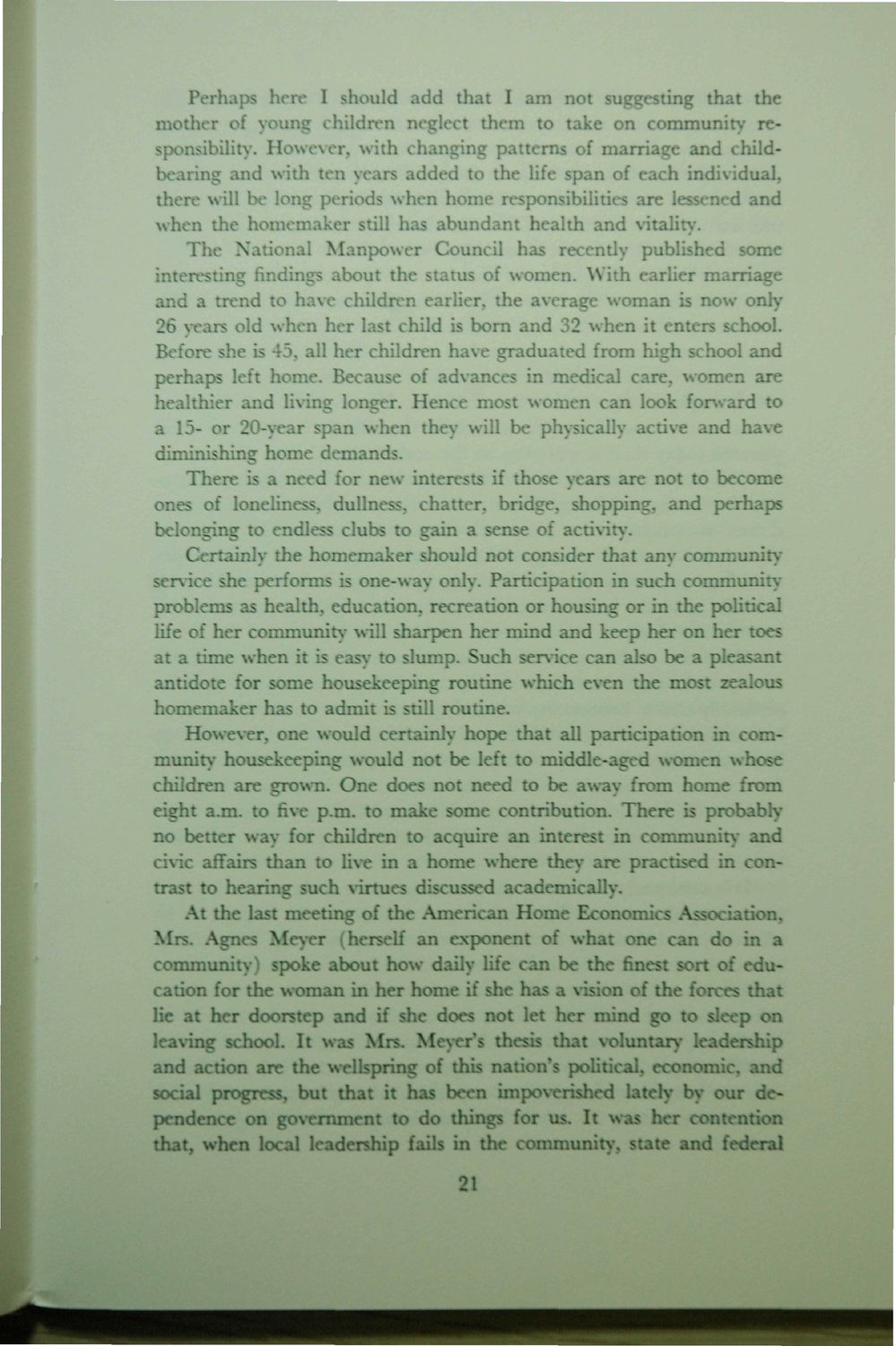| |
| |
Caption: Dedication - Home Economics - Challenge of Home Economics
This is a reduced-resolution page image for fast online browsing.

EXTRACTED TEXT FROM PAGE:
Perhaps here I should add that I am not suggesting that the mother of young children neglect them to take on community responsibility. However, with changing patterns of marriage and childbearing and with ten years added to the life span of each individual, there will be long periods when home responsibilities are lessened and when the homemaker still has abundant health and vitality. The National Manpower Council has recently published some interesting findings about the status of women. With earlier marriage and a trend to have children earlier, the average woman is now only 26 years old when her last child is born and 32 when it enters school. Before she is 45, all her children have graduated from high school and perhaps left home. Because of advances in medical care, women are healthier and living longer. Hence most women can look forward to a 15- or 20-year span when they will be physically active and have diminishing home demands. There is a need for new interests if those years are not to become ones of loneliness, dullness, chatter, bridge, shopping, and perhaps belonging to endless clubs to gain a sense of activity. Certainly the homemaker should not consider that any community service she performs is one-way only. Participation in such community problems as health, education, recreation or housing or in the political life of her community will sharpen her mind and keep her on her toes at a time when it is easy to slump. Such service can also be a pleasant antidote for some housekeeping routine which even the most zealous homemaker has to admit is still routine. However, one would certainly hope that all participation in community housekeeping would not be left to middle-aged women whose children are grown. One does not need to be away from home from eight a.m. to five p.m. to make some contribution. There is probably no better way for children to acquire an interest in community and civic affairs than to live in a home where they are practised in contrast to hearing such virtues discussed academically. At the last meeting of the American Home Economics Association, Mrs. Agnes Meyer (herself an exponent of what one can do in a community) spoke about how daily life can be the finest sort of education for the woman in her home if she has a vision of the forces that lie at her doorstep and if she does not let her mind go to sleep on leaving school. It was Mrs. Meyer's thesis that voluntary leadership and action are the wellspring of this nation's political, economic, and social progress, but that it has been impoverished lately by our dependence on government to do things for us. It was her contention that, when local leadership fails in the community, state and federal 21
| |